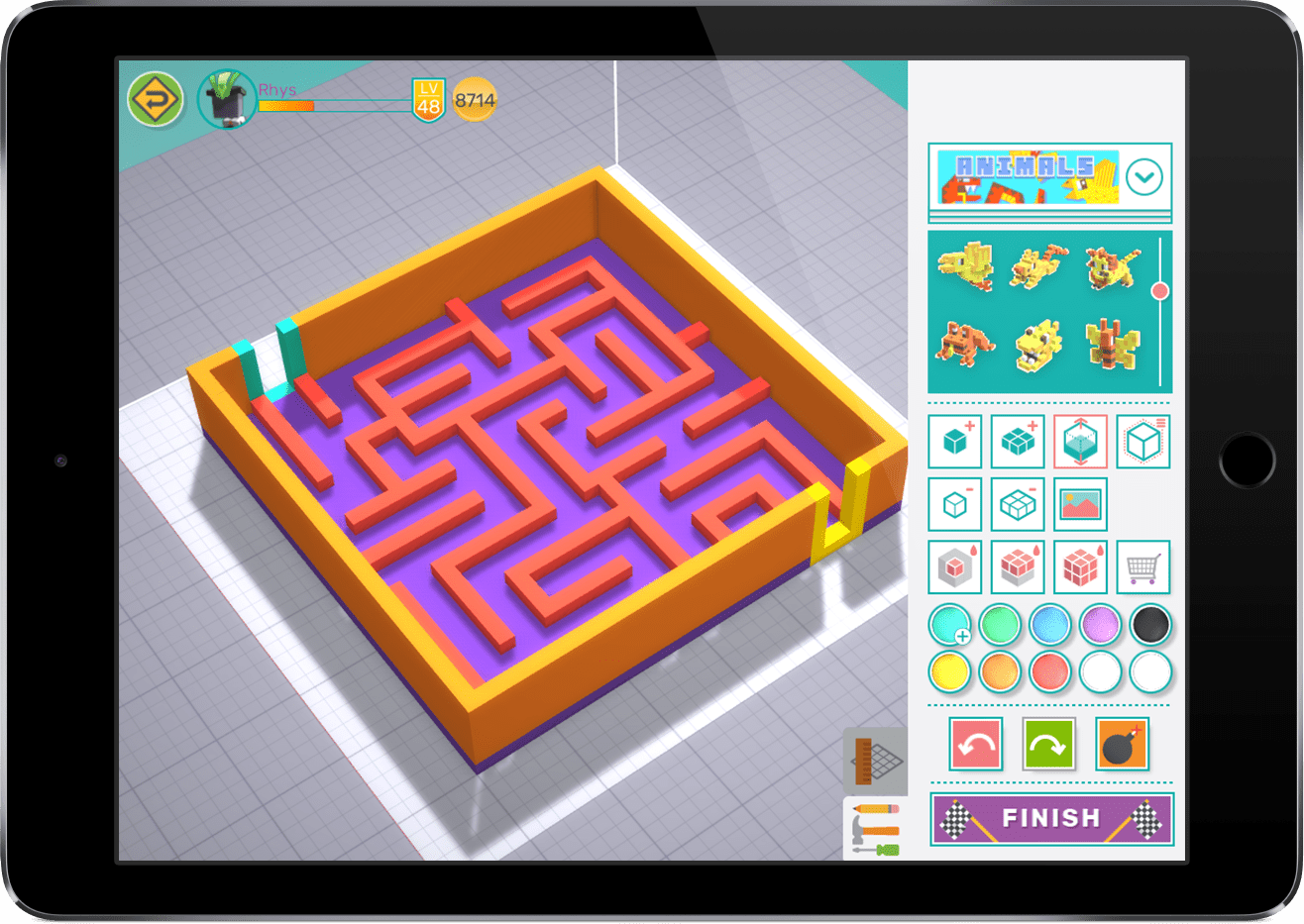You’ve heard of intellectual intelligence (IQ) and emotional intelligence (EQ) a measure of a person’s reasoning and emotional ability, respectively. But are you familiar with spatial intelligence and its importance in education and learning?
Spatial intelligence or spatial ability is the skill required to mentally manipulate 2D and 3D objects.
So why should classroom teachers be interested in their students’ spatial intelligence? Well, according to a recent 45-year comprehensive study into ‘genius’, the exceptional spatial ability of students aged 13 years can predict creative and scholarly achievements over 30 years later.
Study of Mathematically Precocious Youth
The ‘Study of Mathematically Precocious Youth’ was a 45-year longitudinal study In this multi-decade spanning survey of intellectually talented children conducted by David Lubinski and his colleagues at Vanderbilt University. During the course of this groundbreaking survey, his team tracked the careers and accomplishments of some 5,000 children, many of whom have gone on to become high-achieving scientists.
Lubinski and his colleagues singled out ‘spatial ability’ as an overlooked indicator of future success. They found that spatial ability is a predictor of the development of new knowledge, and especially innovation in science, technology, engineering, and mathematics (STEM) areas, well beyond traditional and measures of mathematical and verbal ability.
“When you look at the issues facing society now — whether it’s health care, climate change, terrorism, energy — these are the kids who have the most potential to solve these problems. These are the kids we’d do well to bet on,” says Lubinski in Nature.
Interestingly, Lubinski and co. noted that students with impressive spatial ability may make exceptional engineers, architects, and surgeons, despite not excelling in mathematics and verbal ability.
This is all extremely promising, however, Lubinski and his colleagues also found that this sort of intelligence is being overlooked in our current education and testing systems. They believe that helping students develop spatial ability is key to creating more high potential individuals. In fact, Lubinski noted that spatial ability “may be the largest known untapped source of human potential.”
The Challenge for Classroom Teachers
So how can we help our young students develop their spatial ability or intelligence?
In recent years, 3D printing and design has been touted as a way to help improve student’s spatial intelligence. At Makers Empire, we’ve seen firsthand how students’ spatial awareness abilities improve after using our 3D modeling software, and we’ve heard numerous anecdotal accounts from our global teaching community.

What is not always easy is measuring the difference 3D printing can make in helping students improve their spatial ability. Luckily, two Australian teachers conducted their own research study, which can be replicated by other teachers in the classroom.
An Australian Research Study
In 2016, two Australian primary school teachers, Graham Gordon and Ruth Cowen, investigated the impact of 3D printing on a group of 50 grade 5-7 students at Sturt Street Community School in Adelaide, South Australia.
To create a baseline, the teachers began the experiment by setting the students mental rotation, cross-section and projection tests such as the Santa Barbara Solids Test, the Perdue Visual Rotation Test and Guay’s Visualisation of Viewpoints Test. These tests were used to assess the students’ spatial ability and aptitude into STEM degrees. They are widely recognised and used by companies and organisations such as the Australian Defence Force during the hiring process.
At the beginning of the study, the teachers found that boys and students who were very active in sports tended to score higher.
Over the next six months, the teachers gave students had opportunities to engage with Makers Empire’s 3D modeling software. They set the students’ design tasks and challenges so the students could experience the full design cycle. More information can be found here.
The Results
After six months of using Makers Empire 3D modelling software, the teachers compared results. It was clear that the majority of students demonstrated an improved ability to mentally rotate and manipulate 3D shapes.
Interestingly, all of the girls tested higher for spatial ability. You may recall that girls tested lower than boys at the beginning of the study so this across the board improvement is extremely encouraging. Actually, it’s even more positive when you consider that women are critically under represented in STEM related careers.
Mandi Dimitriatis, Director of Learning at Makers Empire, explains more about the Australian research in this short video:
Implications for Teachers
As well as developing students’ intellectual and emotional intelligence, kindergarten, primary and elementary teachers should also look at ways to help their students develop their spatial intelligence.
Furthermore, given that females are chronically underrepresented in STEM careers, teachers should be particularly encouraged to help their female students develop important spatial skills. With the current shortage of females in STEM, teaching spatial skills can help bridge the STEM gender gap.
Feeling inspired? Contact us to find out how to help your students develop their spatial intelligence for greater future success.


